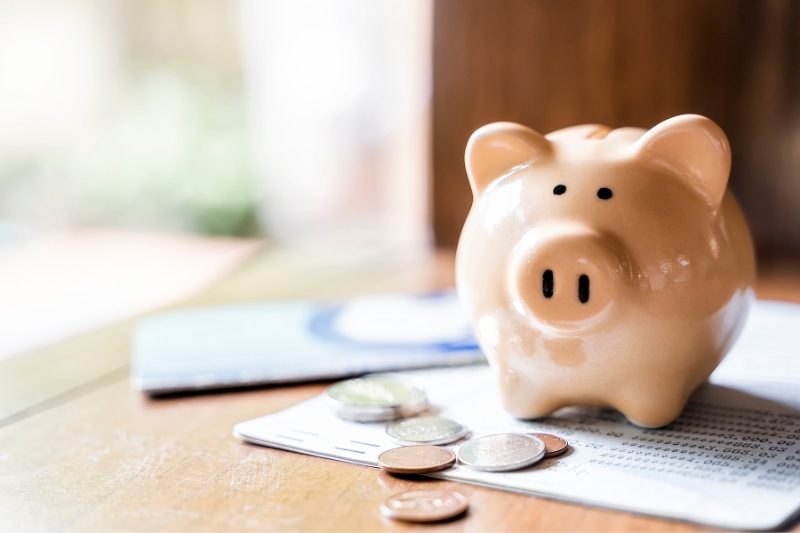We all know that it’s important to have money set aside for the future—whether it’s long-term goals or a rainy-day fund for unexpected expenses.
Unfortunately, saving money isn’t always easy. Whether you’re living paycheck to paycheck, are struggling with debt, or simply never developed the habit, like many others, you may find it difficult to prioritize saving money. In fact, 44% of Americans don’t have $1,000 in savings that they could use, should they face an emergency expense.
If you have had trouble saving in the past, or are new to saving money, a great way to start is to set a simple savings goal of $1,000. This amount is affordable, attainable, and the perfect steppingstone to larger goals, from home ownership to retirement.
But first, you’ll need to create a budget that puts savings on the map…
Common Budgeting Methods
If you have an unlimited supply of money, setting aside funds for saving is easy. But if you are like most of us, it can be hard to carve funds out of your monthly spending for savings. That’s why creating—and following—a budget is so important for saving money.
A budget is essentially a way of organizing your spending with the goal of limiting it where you can, so you have enough money left over for things that you really need—including savings. Creating a budget, where you first examine your income and expenses, can help you see exactly where your money is going, giving you ideas for how to trim back unnecessary expenses (more on this later) and providing you the needed inspiration to make smarter spending choices. The ultimate goal of any good budget is that your financial health—paying your debts and saving money—is prioritized over wants.
There are lots of tried-and-true methods for budgeting. Let’s look at a few popular and easy-to-follow options.
50/30/20 Budgeting
When you develop a 50/30/20 budget, you focus less on line items then on ensuring your spending for major categories stays within the appropriate proportions. With this budget, you set aside 50% of your income for needs, 30% to wants, and, importantly, 20% to savings. Start by evaluating your current spending and seeing how it aligns with these percentages, using an app or calculating by hand referencing receipts and account statements. If you find your spending on wants far exceeds 30%, consider ways you can reduce this area.
Note, these percentages are not set in stone. You may find that you need to play with the numbers a little to match your needs. For instance, if you have an exceptionally tight budget, 50% may not entirely cover your needs, and you may find it hard to swing 20% for savings. Consider setting aside 10% instead. Alternatively, you may find that spending 30% on wants is more than enough and those extra funds could be better used to boost your savings. The important thing is to make it work for you.
Envelope System
With this method, you establish a set dollar amount of money for your expenses and wants. Each month you put that amount of money—in cash—in each designated envelope. When those funds are gone—they’re gone! The end result of this is that you are not only more aware of your spending, you are also forced to limit it, carefully rationing it over the course of the month.
For individuals who are concerned with the security of a cash system, you may choose to simply create a cash envelope for discretionary spending, like for going out, takeout, or in-person shopping. You may also consider using a modern version of this system, found in popular budgeting apps.
Zero-Based Budgeting
Finally, let’s look at a common system businesses use for budgeting that can be adapted to personal or family budgets. With zero-based budgeting, you first set a specific time frame—say a month or a quarter (three months). You start your budget from the ground up for each period, making sure that each expense is justified based on what is most needed for that upcoming timeframe, which includes necessary spending (food, housing, transportation, debts, etc.) and savings.
Setting a Goal
Creating a budget is an essential first step to saving. It will help you highlight areas of spending to cut, give you a better understanding of your habits, and set a realistic amount that you can put aside each month or paycheck.
It’s that final piece—the amount of money you can realistically set aside for savings—which can help you determine a workable timeline for reaching your $1000 savings goal.
It’s important to be realistic when creating your timeline. While you can always save more in one month, if you set a monthly goal that’s too high to sustain, you may feel frustrated by the shortfall, and your desire to continue saving could be undermined. Setting attainable goals can help build motivation, and let you relish in your success when you meet them, reinforcing your new savings habit.
Even if you can realistically only set aside $100 per month for saving, in less than a year—only 10 months—you’ll have reached your $1,000 goal.
Strategies to Boost Your Savings
If, upon examining your budget, you find that there’s not much (or any) left over for savings, you may need to strategize ways to claw some of that money out of your current spending habits. Here are a few ways you can find $100 or more each month in your budget.
Packing Your Lunch and Skipping the Takeout
If you often eat out for lunch or turn to takeout or going out to eat in lieu of cooking, you may be spending hundreds or thousands of dollars each year that could easily go to savings instead. In fact, spending $15 to eat out for lunch every workday ($75 a week) adds up to $3,600 a year!
Reserve eating out as a once a week treat, and funnel that money into your savings, instead.
Cutting or Downgrading Subscriptions
From cable and streaming TV to gym memberships, monthly subscriptions can add up significantly over the course of the year—even if they are only a few dollars each month.
If you find yourself not going to the gym as much as you’d like, consider canceling the membership and finding cost-effective alternatives for exercise instead.
Love to binge watch? Limit yourself to one or two streaming platforms at a time. Once you’ve explored the movies and shows you are most interested in, simply cancel one membership and join another service. Additionally, explore free options for video streaming including Hoopla, which offers free audiobooks, eBooks, comics, movies, TV, magazines, and music for library card holders.
Lastly, for some bills like cable and internet, you may be able to negotiate a lower monthly rate, or even pay someone else to do it for you.
Saving on Groceries
Groceries are a huge monthly expense, and this necessary cost has grown rapidly with inflation. However, because they are such a big expense, smart grocery shopping also can provide lots of opportunities to save.
These can include:
- Using coupons. Whether cut from newspapers or found online, coupons can offer huge savings—especially if you are able to combine or double them.
- Buying in bulk. When you get a good deal on a product you use, stock up. This can save you money in the long run, even if it costs a little more upfront.
- Reward and cash back apps. Apps like Fetch, Rakuten, and Ibotta can help you earn reward points to be used for other purchases, or even get actual money back.
Removing Temptation Apps from Phone
Your phone can provide you with many conveniences—but it can also make parting with your money that much easier. Whether it’s betting, online shopping, or delivery food, having apps that help you spend money at your fingertips can wreak havoc on your budget.
The solution is easy—simply delete them.
Earning Extra Money
Cutting costs is one way to find the funds for your savings goals. However, you may find just as much success by bringing in extra money. Consider:
Selling unused items. Whether it’s selling sought-after items on eBay, offloading unneeded things locally on Facebook Marketplace, or signing up for the annual neighborhood yard sale, a month or more of savings could be currently lying around your house.
Offering your skills. Good at sewing? Offer up your handiwork. Know a lot about a subject? Consider tutoring. Enjoy yard work or babysitting? Post your services on a neighborhood group. Like driving? Signup to be a rideshare driver or food delivery person. There are many ways to use your skills and resources to earn some extra income each month, on your terms.
Automatic Transfers to Savings Accounts
Lastly, one of the best and easiest ways to boost your savings is to simply automate it.
When you set up an automatic transfer in a budgeted amount—even only $20 a week—you’ll be amazed at how quickly your account balance adds up. And chances are, you won’t even notice this small amount missing. In fact, saving only $20 per week will turn into $1,000 in less than a year.
Transferring money automatically from a checking account to a savings account is simple to do and can be set up quickly using online or mobile banking. And when you deposit money into a savings account, you won’t be tempted to spend it. Lastly, most personal savings accounts offer interest, helping your savings grow even faster.

Make Your First $1,000 Savings Milestone a Reality
When you employ effective budgeting strategies and stay focused on your financial goals, saving $1,000 becomes not just achievable, but it can also serve as a foundation for greater financial security.
Ready to start on your path to savings? For personalized guidance or to open a savings account, reach out to us at your local Citizens State Bank branch in Naturita, Ouray, Ridgway, Silverton, or Telluride. We can help answer your questions, create a savings plan, and choose an account that fits your needs and your lifestyle!




